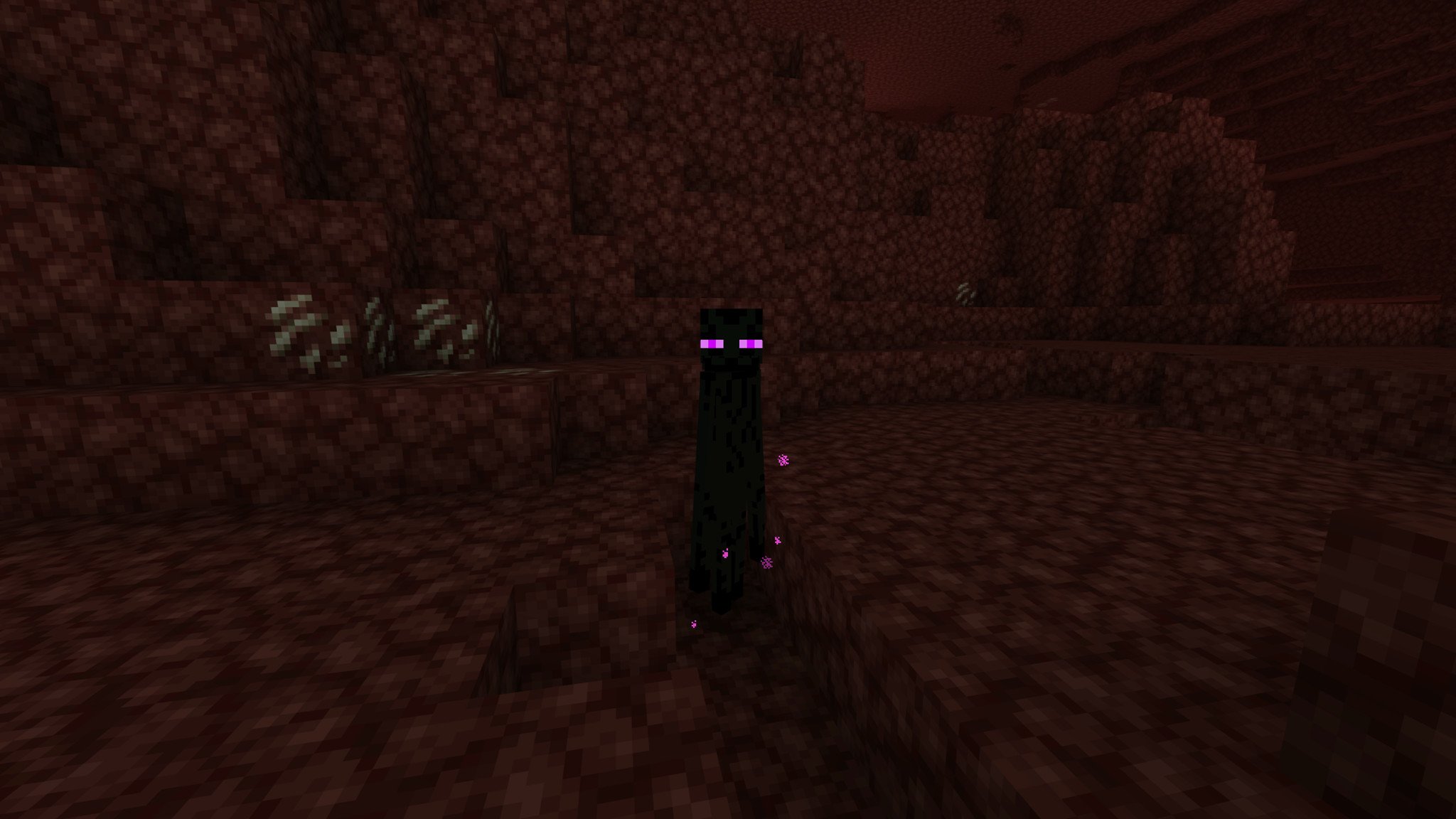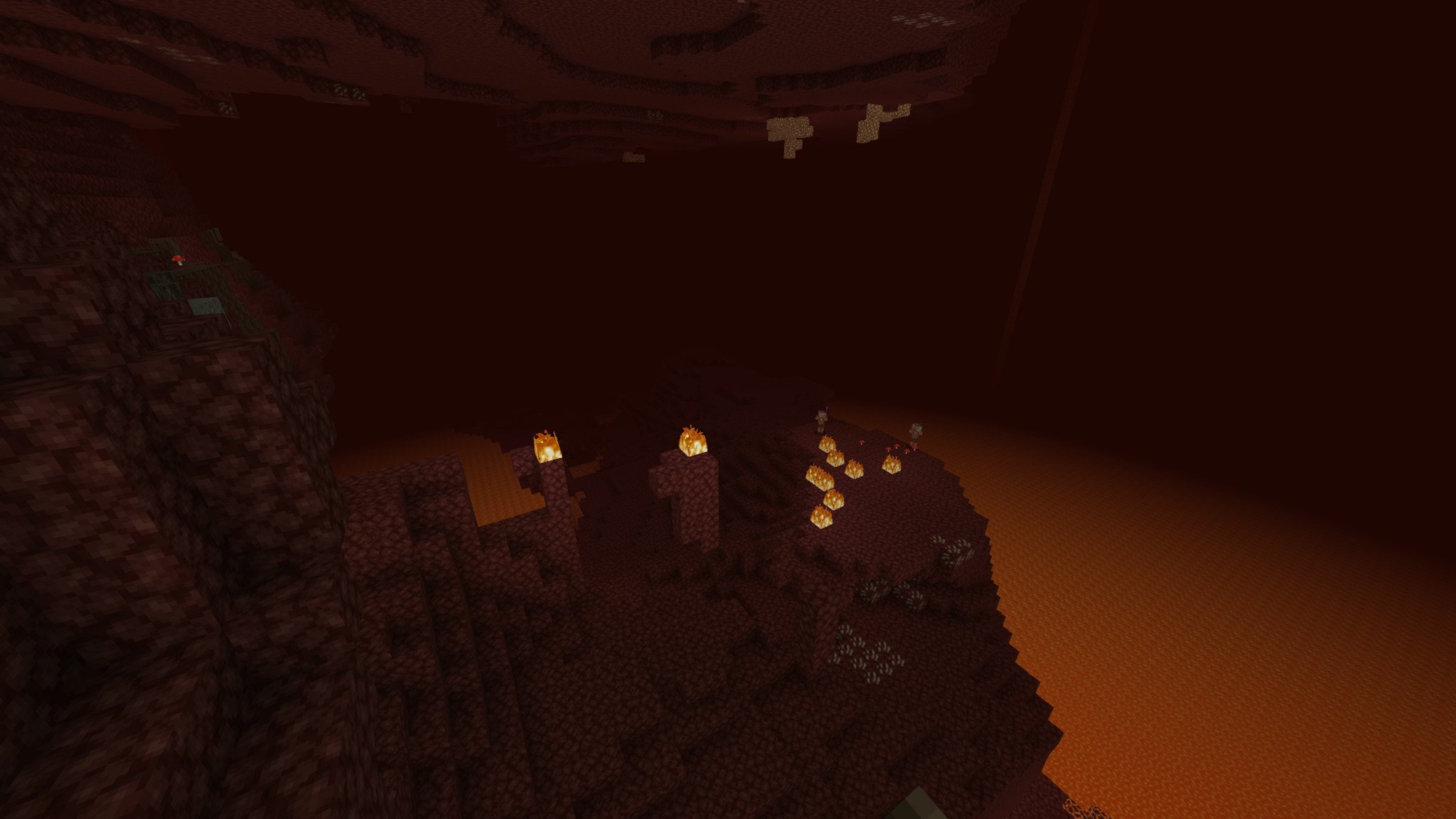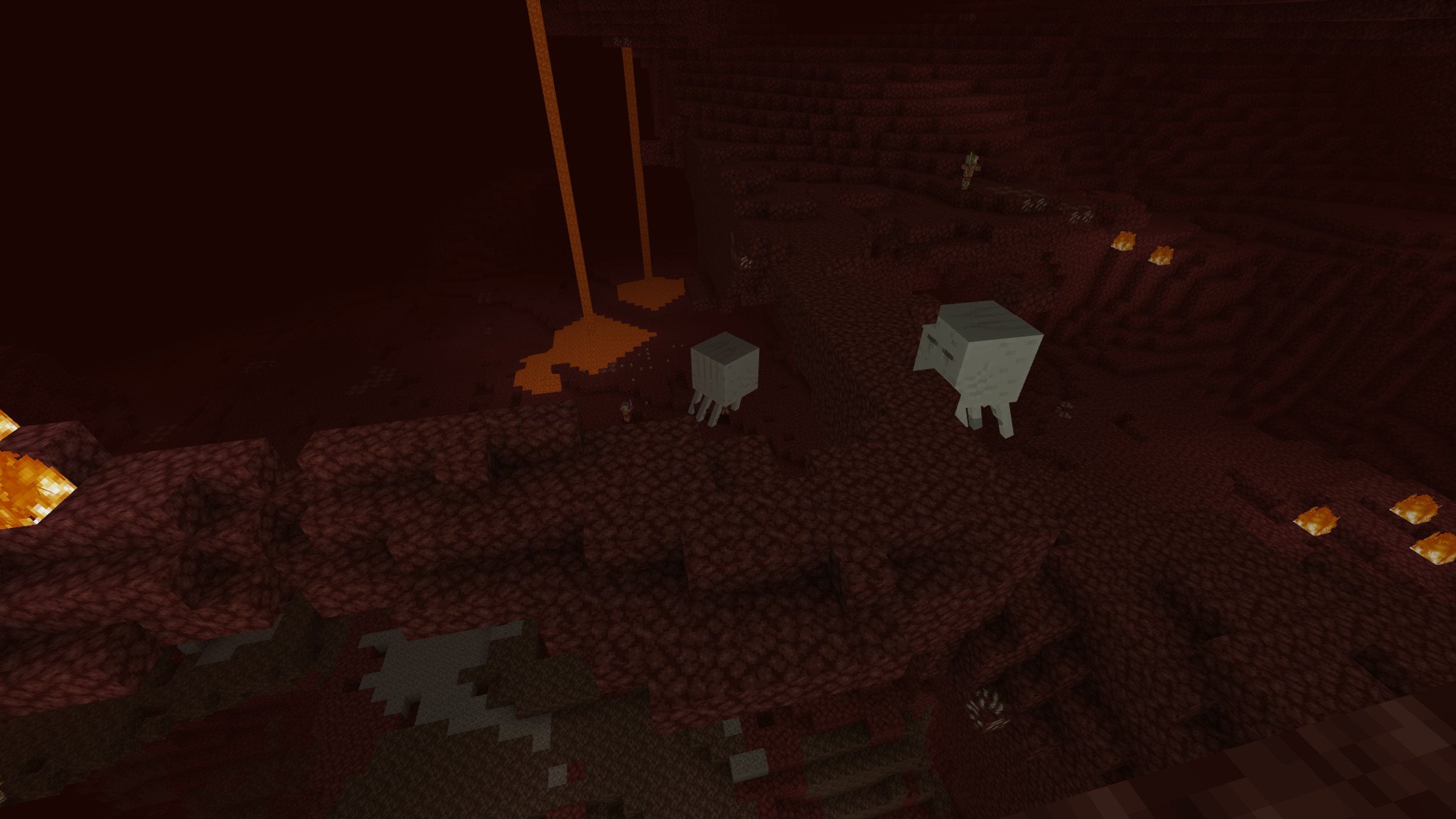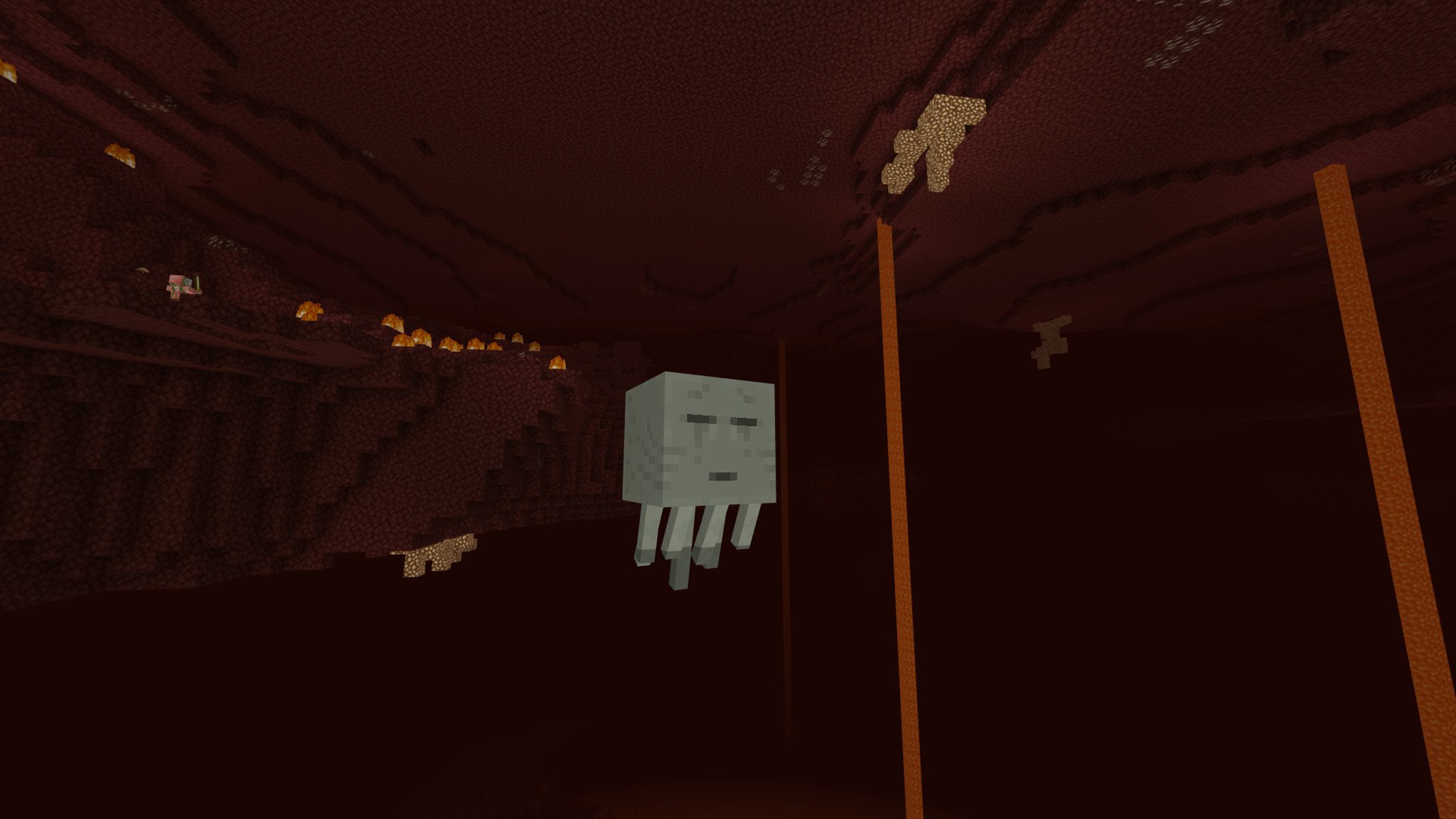Minecraft Guide to the Nether: World, mobs, loot and more
Filled with heat and hate, the Nether isn't a place to explore in blissful ignorance.


Ever since its fiery debut on Halloween nearly a decade ago, the Nether has been the closest rendition to Hell you've been able to find in Minecraft. Lakes and waterfalls of bubbling lava, swarms of hostile mobs, and shadowy fortresses towering above it all dominate the Nether's desolate landscape, leading to a place you don't want to visit without a little know-how. Much like the lava blanketing the floor of the Nether, we've got you covered.
Related: Everything you need to know about the Nether Update for Minecraft
Getting to the Nether

Fortunately, there's zero chance that you'll carelessly meander into the Nether one dark night. The Nether is essentially on another plane of existence, and you need to construct a Nether portal to travel there.
What is the Nether?

The Nether is a place entirely separate from the Overworld that you know and love in Minecraft. Gone are the varied and lush biomes, lively animals, and hidden secrets. Instead, you get a place built primarily out of netherrack, a dark red stone-like substance that is extremely flammable and burns for literally eternity if the fire isn't put out manually. On top of that, the Nether is filled with a myriad of waterfalls, lakes, rivers, and hidden underground pockets, all filled with lava.
The Nether is also notoriously convoluted to trek across, being a very vertical world with no rhyme or reason to the design of its multiple levels. If you're not overtly cautious (such as strategically placing torches at precise intervals), you risk becoming hopelessly lost in a world in which maps don't work, you can't sleep, and there's no consistent supply of food. Ouch.
If that wasn't enough, there's a large number of hostile mobs that will not hesitate to interrupt your innocent adventures with poison, arrows, swarms, and even exploding fireballs. These dangers and more combine to make the Nether a dangerous place, but it's not without reason. There are resources and materials you can only find in the Nether, as well as Nether fortresses that have potentially lucrative loot for you to discover.
There's also no day/night cycle in the Nether, so you can always expect to be cast in pseudo-darkness, meaning you can't sleep. In fact, trying to use a bed results in a massive explosion greater even than TNT, so do with that what you will. As mentioned before, maps and compasses also don't work and instead go haywire, which is helpful, and water instantly turns to steam. If you thought you were clever by bringing those buckets of water, the Nether is even more clever. Everything in the Nether wants you to die.
All the latest news, reviews, and guides for Windows and Xbox diehards.
Finally, distance is a little weird in the Nether. For every block you travel there, you actually travel eight blocks in the Overworld. That means if you build a second Nether portal separate from the one you used to get to the Nether, an identical portal will appear in the Overworld. It will also be miles away from the first one. In this aspect, the Nether could potentially be a useful way to travel vast distances quickly if you're willing to accept the risks and put in the time.
What can you find in the Nether?

There are several things to find and do in the Nether, including a bunch of Nether-exclusive blocks that are useful for potions, building, and more. Let's start with the naturally spawning blocks:
- Bedrock: An utterly indestructible block, even with TNT and diamond tools. Bedrock forms the lowest and highest layers of the Nether, creating an inescapable hell-prison around you.
- Gravel: The most infuriating of the blocks in the Overworld, it's no wonder gravel managed to find its way into the Nether.
- Netherrack: Burns indefinitely when it is set alight. It can be mined quickly with any pickaxe. It isn't very durable but can be useful for fireplaces, beacons, and other things that need light.
- Nether quartz: Drops Nether quartz, which is used in a variety of crafting recipes, including creating quartz pillars.
- Glowstone: Hangs in clusters from the roof of the Nether. It produces its light and can be broken without a tool. It drops glowstone dust when broken.
- Nether wart: Nether warts naturally spawn in blocks around stairwells within Nether fortresses. They can also be planted on soul sand, but growth can not be sped up by bone meal. It has three growth stages, fully grown being a thick cluster of red warts sprouting tall from the block. Useful for brewing potions.
- Soul sand: Slows down anything that walks on it, and can be used to grow nether warts and build Withers. It can be mined with or without tools, but spades are faster. The default texture has ghostly faces within it. Spooky.
- Nether brick: What Nether fortresses are constructed out of. Nether brick looks similar to stone bricks but is dark red. It's immune to Ghast fireballs and resists explosions, making it useful for defense. It can be mined with a pickaxe with a similar speed to stone.
- Nether brick fence: A fence constructed out of Nether brick and is also found in Nether fortresses. It has similar properties to Nether brick but behaves like any other fence or cobblestone walls.
Monsters of the Nether

The Nether is also home to its own suite of baddies, all of which possess unique attributes and attacks. If you couldn't tell, the Nether is a fun place. Here are all the mobs you can expect:
- Skeletons: One of the most common mobs found anywhere in Minecraft, skeletons fire ranged arrows at you. They drop bones, feathers, arrows, and occasionally bows and enchanted bows upon death.
- Endermen: Another mob that can be found elsewhere, endermen are passive and relatively rare. They move blocks around and generally prefer to stay out of the light. Endermen will attack if you look them in the eye, and can teleport instantaneously.
- Zombie pigmen: Zombie pigmen are Nether natives. They are one of the most common mobs found in the Nether and are often found wearing gold armor and weapons. These can be dropped on death, and equipped by the player. Zombie pigmen are usually passive, but if one of them takes damage from the player, every zombie pigmen in the area will immediately turn hostile and attack. On their own, they're not a huge threat, but a horde can quickly overwhelm even well-equipped players.
- Ghasts: Ghasts can spawn anywhere in the Nether if there's room for them to fly. They're one of the largest mobs you can find in Minecraft and can shoot explosive fireballs from a vast range away. Their fireballs can be batted back at them, and they are also vulnerable to ranged projectiles. They are immune to lava, and often take baths in it. They drop ghast tears, which are useful for potion brewing.
- Magma cubes: Magma cubes spawn anywhere in the Nether at any light level, but are more likely to generate within the Nether Fortress. They behave identical to regular slime, in that they have multiple "stages" in which they split into numerous, smaller copies when taking damage. There is also a possibility that on death, a magma cream will be dropped.
- Blazes: Blazes are found in the Nether fortresses. They have limited ability to fly and rapidly shoot small fiery projectiles. They may drop blaze rods on death, which are used in crafting and potion brewing. They often spawn out of spawners, so if you're not careful, you can easily be overwhelmed.
- Wither skeletons: Speedy and dangerous, wither skeletons take no prisoners. They most often spawn within Nether fortresses. These merchants of chaos can pick up and use dropped weapons and armor. Beyond that, they also deal a relatively large amount of damage and can "wither" you, meaning you'll take additional damage over time, and your hearts will turn black. Wither skeletons are easily amongst the most dangerous mobs you can find in the Nether and elsewhere. Wither skeletons have a small chance of dropping a wither skull upon death.
Outside of these naturally spawning mobs, there is one other hostile mob that can only be summoned with materials gathered in the Nether: the Wither. The Wither is a super powerful boss mob that should only be summoned if you're fully prepared to fight for your life. It is summoned similarly to iron golems, except with different materials. The player needs to gather four blocks of soul sand and arrange them in a "T" shape; then three wither skulls (collected from killing wither skeletons) arranged on top.
The Wither deals massive amounts of explosive damage, can destroy almost any block in the game, and has positively gargantuan health bar to accompany it. If you choose to go up against the wither, good luck. You'll need it. If you manage to kill the Wither, it does drop a nether star, which is a rare item used in creating beacons.
Nether fortresses

Nether fortresses are monuments that naturally occur in the Nether. They generally hold a lot of loot but are easy to get lost in due to their seemingly endless corridors, turns, and staircases. They are home to blazes, wither skeletons, and regular skeletons. The fortress is made of Nether blocks, and they sometimes have a tendency to spawn partially within netherrack. This can make finding the fortress slightly difficult, as outer exterior markers may be covered. There's also a decent chance of chests spawning within the corridors of a Nether fortress, and there's some good loot to be had if you find them. The list below is in order from least to most rare.
- Gold ingot: In almost half of Nether fortress chests you find, it's not as though gold is that hard to come by. It's a fairly common ore and can be found almost everywhere in the Overworld. Not precisely useless, though.
- Saddle: Used to ride horses, donkeys, mules, and pigs. It can be used as part of the When Pigs Fly achievement.
- Gold horse armor: Gives moderate defense to your horse. If you get armor, why not your horse?
- Nether wart: Nether warts naturally spawn in blocks around stairwells within Nether fortresses. They can also be planted on soul sand, but growth can not be sped up by bone meal. It has three growth stages, fully grown being a thick cluster of red warts sprouting tall from the block.
- Iron ingot: A common and abundant ore in the Overworld. It is used to build first-tier tools and weapons; it could be handy for crafting on the fly if you run out of materials to make stronger weapons.
- Diamond: A rare gem used to create the higher tier weapons and armor. Found in small pockets deep underground in the Overworld.
- Flint and steel: Can ignite Nether portals and most materials and animals.
- Iron horse armor: Provides less defense for your horse, but still a good idea to keep it safe.
- Golden sword: Strong but has low durability. Good to have as a spare, just in case.
- Golden chest plate: A decently strong chest plate, but not very durable.
- Obsidian: The hardest placeable block in Minecraft. Since this is the rarest block you can find in the Nether, this probably isn't the most efficient way of obtaining it.
Can you build in the Nether?

The answer is yes. Depending on how high your difficulty is set determines whether or not monsters will spawn within the Nether. If you're playing on peaceful, you can build to your heart's content. If you are playing on any other difficulty, you're at risk of attack while building.
The main enemy to watch out for as soon as you spawn into the Nether is a Ghast. Ghast fireballs can break your Nether portal, but you can build a cobblestone wall around it if you're worried. If you're unfortunate enough to spawn into the Nether in an open area, protecting your portal is the wisest option. Imagine getting stuck in the Nether after having summoned a Wither, and not being able to get back out. Since water turns to steam in the Nether, and Obsidian is so difficult to find in chests, if you didn't bring spares... RIP you.
Beware when mining into the netherrack if you're planning on building into the cliff faces. Lava blocks tend to spawn within netherrack clusters, so be prepared to block up any sudden lava appearances. Taking a Potion of Fire Resistance (or twelve) with you into the Nether is a good idea, as it protects against lava, fire, and blaze attacks. The only downside is it requires taking on magma cubes to get magma cream, so watch your fingers — things could get hot!
Keep in mind that it's not possible to permanently live in the Nether, though. Beds violently explode, and farming isn't very productive without water, so you'll always have to go back to the Overworld eventually. That said, it's still useful to have a base that you can run your Nether operation out of, and this could double as much-needed protection for your Nether portal. Wouldn't want to get stranded.
What's next for the Nether?
While it was a pretty substantial update when it was first released, the Nether hasn't changed all that dramatically since its debut. That's going to change in the future, however, as Microsoft and Mojang announced a pretty substantial update that will be arriving in the first half of 2020 next year. More biomes, more features, and more danger (of course).
Have you been to the Nether? Tell us about your experiences!

Zachary Boddy (They / Them) is a Staff Writer for Windows Central, primarily focused on covering the latest news in tech and gaming, the best Xbox and PC games, and the most interesting Windows and Xbox hardware. They have been gaming and writing for most of their life starting with the original Xbox, and started out as a freelancer for Windows Central and its sister sites in 2019. Now a full-fledged Staff Writer, Zachary has expanded from only writing about all things Minecraft to covering practically everything on which Windows Central is an expert, especially when it comes to Microsoft.
